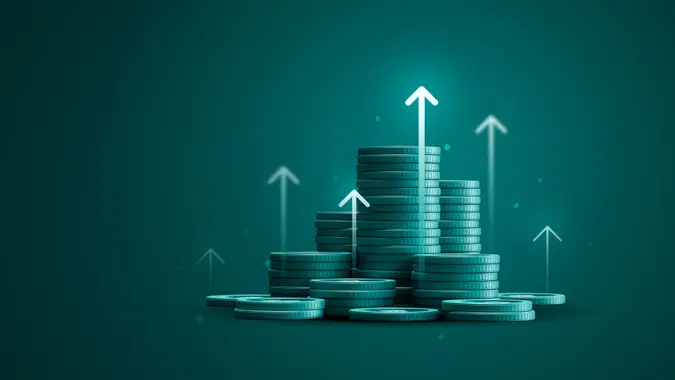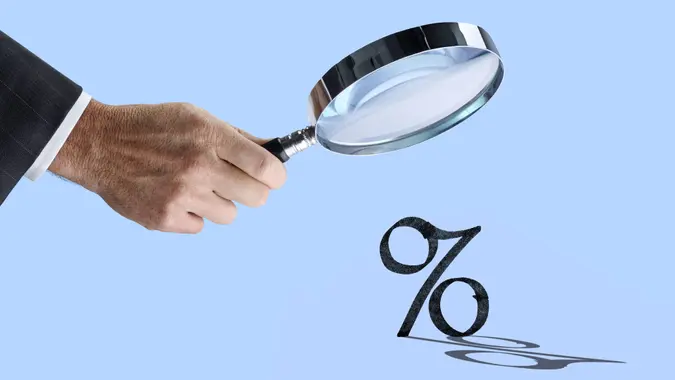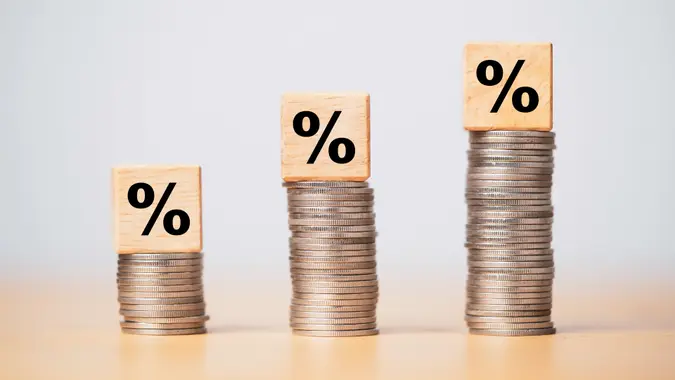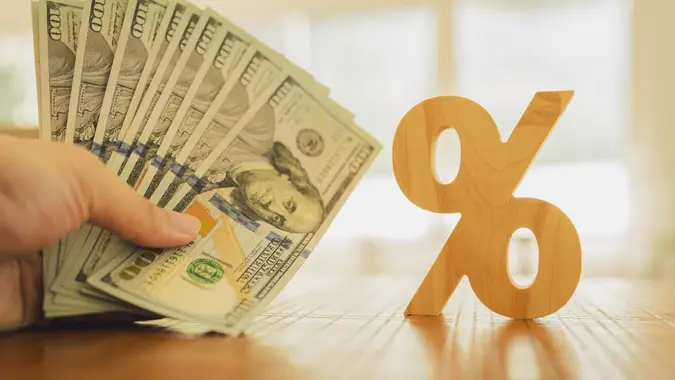What Fed Rate Cuts Mean for Your Money
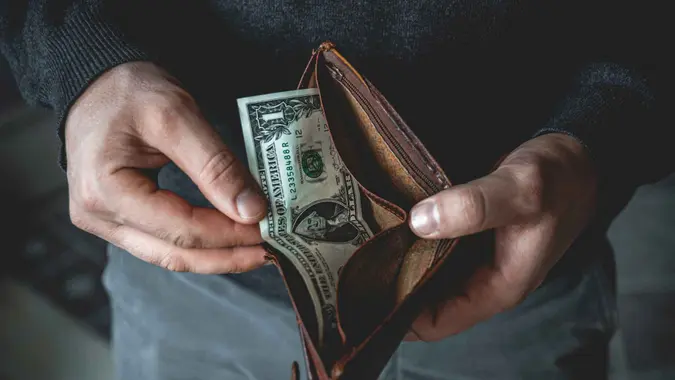
Commitment to Our Readers
GOBankingRates' editorial team is committed to bringing you unbiased reviews and information. We use data-driven methodologies to evaluate financial products and services - our reviews and ratings are not influenced by advertisers. You can read more about our editorial guidelines and our products and services review methodology.

20 Years
Helping You Live Richer

Reviewed
by Experts

Trusted by
Millions of Readers
There is no way around it: The American economy is having a bit of a crisis in 2024. Many people are finding it hard to make ends meet, with prices of things like groceries at an all-time high. One thing the federal government can do in situations like this is institute a rate cut to ease up some of the pressure average consumers are feeling, particularly on their loan debt. While that might sound like an easy fix, there is a lot more that comes with a rate cut, both positive and negative.
On Sept. 18 the Federal Reserve cut the federal funds rate ½ of 1% from 5.50% to 5.00%. That action, along with their announcements about forthcoming rate cuts, should be a wake-up call that short-term rates will be dropping, according to Stephen Taddie, the chief economist at HoyleCohen LLC.
“How much short-term interest rates will drop is correlated to how much the Federal Reserve cuts their rate,” Taddie said. “With the assumption that the Fed follows through on the path to 3.5% by the end of 2025, all else being equal, the U.S. Treasury yield-curve will normalize, with short-term rates dropping below long-term rates. That means that the differential between the yield on money markets and yields available on longer-term instruments will evaporate.”
Bradley Thompson, CFA with New Canaan Group in alliance with Equitable Advisors, added, “Lower interest rates impact consumers in several ways, namely lowering their cost to borrow (such as mortgages), lowering their payments on floating-rate debt (such as credit card debt) and lowering income on some investments like Treasury bonds or high-yield savings accounts.
“This is one of those situations where there’s a good and bad side,” he explained.
Joseph Camberato, the CEO at National Business Capital, agreed — but overall sees the rate cuts as a good thing. “Yes, the rates you can earn on things like CDs or Treasury bills will drop, but the flip side is that loans — whether it’s for a car, a mortgage or credit cards — will also start to get cheaper. In the bigger picture, I see this as a positive. Consumers and businesses have been dealing with high interest rates on all kinds of loans lately.”
With this in mind, Thompson pointed out how “…lowering the federal funds rate really only impacts the shorter side of the interest-rate spectrum. That means it may decrease short-term interest rates more, like those paid on bank deposit accounts, while the effect on longer-term rates such as the 10-year Treasury is less well-defined.”
Camberato used the example of car loans, stating that current rates are somewhere between 7% and 11%.
“Having those rates come down will be a relief,” Camberato said. “And honestly, the savings you’ll get from lower loan payments are likely worth more than what you’d earn from putting money into a CD. It’s a trade-off, but one that’ll help a lot of people manage their day-to-day finances better.”
However, “Many types of consumer debt like mortgages and car loans are tied to the 10-year Treasury (or other longer rates),” added Thompson. “That means that [a] lower [funds rate] won’t necessarily provide a big boost for mortgage borrowers. Rates have moved down in those areas in expectation of [a] lower [funds rate], but they don’t necessarily move in unison.”
In short, the Fed rate cut usually affects the personal finances of most Americans by way of investing and borrowing. For investors, however, Taddie highlighted that money market yields will likely drop by one-third by the end of 2025.
“Borrowers with loans tied to the SOFR [Secured Overnight Financing Rate] or other short-term interest rate benchmarks are expected to see the interest expense on their loans drop by a similar magnitude,” offered Taddie, noting how investors and borrowers are on opposite sides of the same coin as one is earning interest and the other paying interest.
“The dynamic that increased the cash flow of the investors at the expense of borrowers when the funds rate was rising reverses, as falling interest rates increase the cash flow of borrowers at the expense of investors,” continued Taddie.
“Investors and borrowers alike will need to deploy different strategies to balance offense and defense as the yield curve shifts. Lower yields on cash-equivalent investments will likely push investors into a combination of longer maturities, lower credit quality and/or less liquid investments if they want to maintain high levels of current income,” Taddie shared.
For those looking to invest, rates are still high relative to recent history, in Thompson’s opinion.
“It can be hard to guess the path of interest rates so I wouldn’t recommend buying longer-term bonds on the expectation that rates will go down,” Thompson advised. “That said, if someone has an obligation in the future, say a wedding in two years, it’s a great time to lock in decent rates. If investors have a dedicated fixed income position in their portfolio, it could be helpful to stay within their allocations and use changes in the market as an opportunity to rebalance.”
“Lower interest rates on loans tied to short-term indexes can create opportunities to refinance existing debts and/or increase business formations, especially where borrowed funds would make up a good portion of the capital investment,” concluded Taddie.
More From GOBankingRates
 Written by
Written by  Edited by
Edited by 





